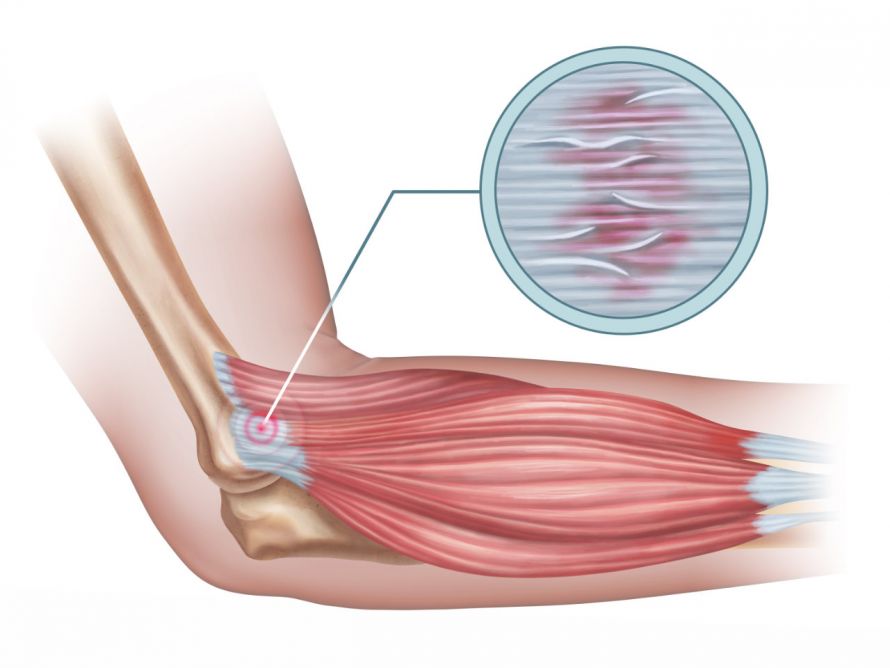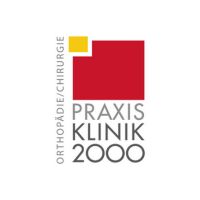Tennis elbow, also called lateral epicondylitis or enthesopathy of the extensor carpi radialis origin, is a collective term. It includes disorders that result from stresses on the arm with frequent repetitive activation of the wrist extensors. Here you can find additional information and selected specialists and centers for the treatment of tennis elbow.
Recommended specialists
Brief overview:
- What is tennis elbow? A collective term for various diseases of the arm and elbow, which result from applying the same type of stress, such as from playing tennis.
- Causes: Inflammation forms at the insertion of a forearm muscle due to repeated injury or overuse.
- Symptoms: Pain occurs mainly when making a fist and sufferers cannot grip tightly.
- Diagnosis: An X-ray or MRI image helps doctors make a definitive diagnosis and can rule out other injuries or diseases.
- Treatment: In the early stages, tennis elbow is treated conservatively (rest, local injections, compression, and physical therapies). If this does not lead to success, surgery can provide relief.
- Prognosis: Conservative treatment is successful in over 90% of cases. After surgery, regular check-ups and physiotherapy are necessary.
Article overview
Definition and causes of tennis elbow
Tennis elbow is an inflammatory reaction of the muscle at the elbow or forearm. The attachment of the extensor carpi radialis brevis muscle (forearm muscle) to the lateral epicondyle of the humerus (outer humeral joint bone of the upper arm) is affected.
With tennis elbow, pain occurs in the area of the outer side of the elbow, which can extend into the upper and lower arm.
The cause of tennis elbow is repeated injury or overuse.

The muscle area affected in tennis elbow © Andrea Danti | AdobeStock
Frequency of tennis elbow
The condition is one of the most common complaints in tennis. More men than women suffer from the disease, the peak age is between 35 and 55 years.
Symptoms of tennis elbow
In tennis elbow, applying pressure to the lateral epicondyle of the humerus causes localized pain. The pain can be triggered especially when making a fist. Affected persons therefore have difficulty gripping firmly or are not able to at all.
Furthermore, pain is evident with wrist extension against resistance when the elbow is extended.
Diagnosing tennis elbow
An X-ray or MRI exam is also recommended to rule out other diseases. Similar symptoms could also indicate
- Synovitis of the elbow joint,
- A blockage of the radial head,
- Loose joint bodies,
- Synovial plica,
- Supinator syndrome, or
- Ulnar nerve syndrome.
These must be ruled out by diagnosis.
Moreover, changes in the cervical spine with degeneration of the 5th and 6th cervical vertebrae may also be present. The examining physician should also keep this in mind.
Treating tennis elbow
Tennis elbow therapies are divided into conservative and surgical treatment.
At the beginning of the disease, conservative therapy is preferred. The aim here is to reduce the inflammatory reaction at the tendon insertion of the affected muscle. For this purpose, the following procedures are recommended in combination with each other:
- Rest,
- Stretching the extensors,
- Ultrasound
- Iontophoresis and electrotherapy,
- Transverse friction massage of the tendon insertion,
- Compression with bandages (epicondylitis bandages),
- Local injections, e.g., with cortisone, and
- General measures such as modification of the tennis racket.
Surgical therapy is necessary if conservative therapy continues to cause discomfort.
The most common surgical method is the Hohmann technique. This involves making an incision in the tendon of the extensor carpi radialis brevis muscle with a Wilhelm denervation.
Follow-up care after tennis elbow surgery
Follow-up care after surgical treatment includes regular wound checks and physiotherapy.
The rehabilitation phase after surgical treatment can last up to half a year.
Healing prognosis for tennis elbow
Conservative treatment shows success rates in the 90 percent range and is therefore the therapy of choice. Consequently, surgical treatment is indicated only in rare cases.






























